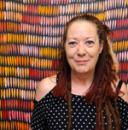This essay is an exploration of the multiple cultural performances and performative Indigenous and non-Indigenous presences competing within events and erased by dominant narratives. The performance and performativity of race, class and culture for both black and white Australians in embodied performances and in accounts as a performative source of ideological meaning-making are critical factors within cross-cultural communications. The focus of this paper is on the dynamic between the Indigenous and non-Indigenous performances and presences within the enactment and documentation of two events separated by 100 years, a nineteenth century anecdote and a twentieth century 'historical' event.
(Source: Casey, M., 'Disturbing Performances of Race and Nation: King Bungaree, John Noble and Jimmy Clements' in International Journal of Critical Indigenous Studies, Vol. 2, No. 2, 2009, p. 25)

